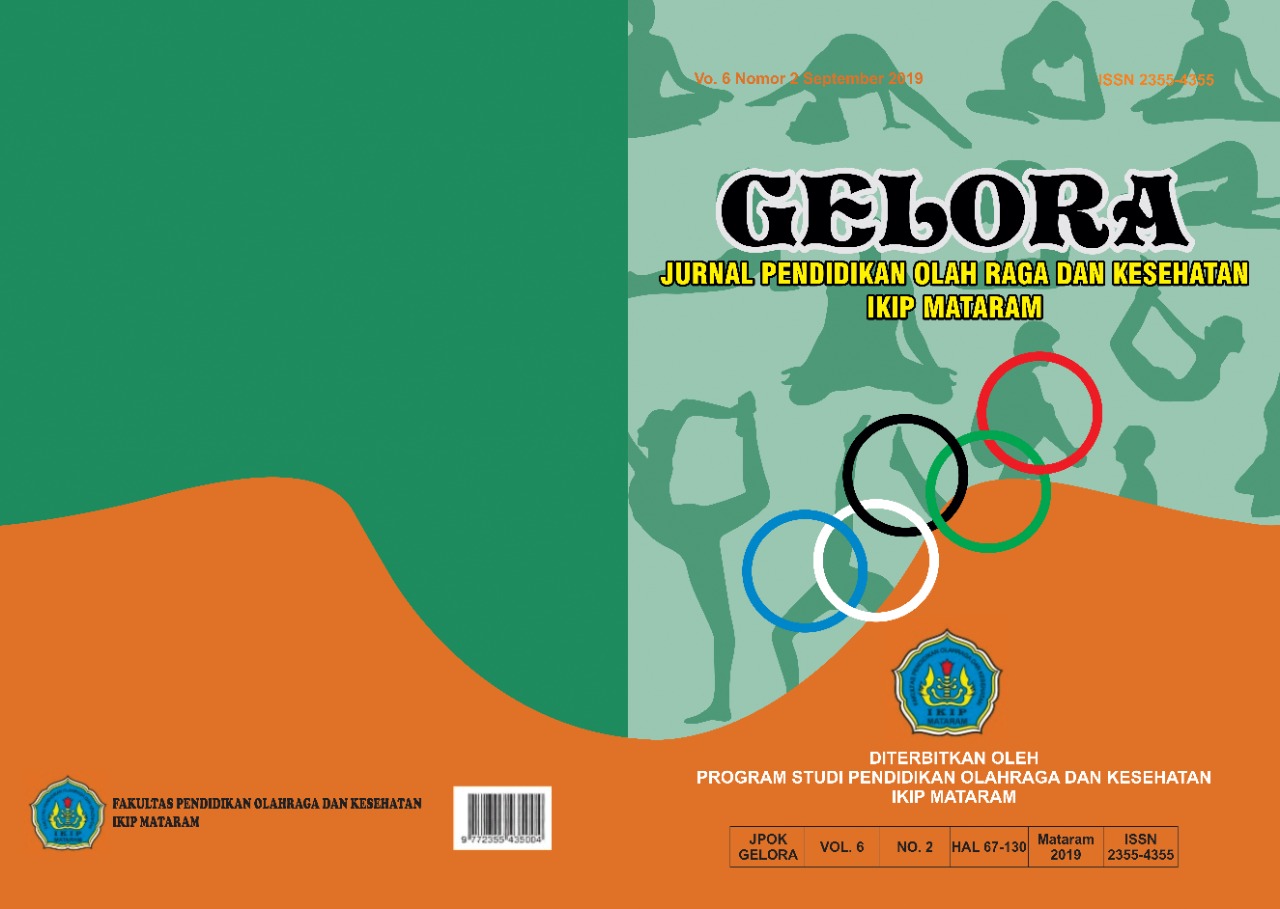PENERAPAN PEMBELAJARAN MODIFIKASI LOMPAT DENGAN BAN UNTUK MENINGKATKAN HASIL BELAJAR LOMPAT JAUH PADA SISWA KELAS V SDK LEWOLOBA KABUPATEN FLORES TIMUR
DOI:
https://doi.org/10.33394/gjpok.v6i2.4043Keywords:
Tire Jump Modification Learning, Long Jump Learning OutcomesAbstract
References
Arikunto, S. 2011. Prosedur Penelitian: Suatu Pendekatan Praktik. (Edisi Revisi). Jakarta. Rineka Cipta.
Abdoelah, A. dan Manadji A, 1994. Dasar-dasar Pendidikan Jasmani.Jakarta: Departemen Pendidikan dan Kebudayaan..
Barlian, Ikbal dan Koryati, Dewi. 2012. Penelitian Tindakan Kelas. Palembang: Almira Press.
Budiningsih, Asri. 2011. Cakrawala Pendidikan. Yogyakarta: Ikatan Sarjana Pendidikan Indonesia DIY.,
Depdiknas, 2008. Materi Pelatihan Kurikulum Tingkat Satuan Pendidikan(KTSP). Jakarta: Depdiknas.
Rusli Ibrahim, 2001. Landasan Psikologis Pendidikan Jasmani di Sekolah Dasar. Jakarta: Depdiknas
Sri Wahyuni, Sutarmin, Pramono, 2010. Pendidikan Jasmani, Olahraga, danKesehatan 1.Jakarta : Kementerian Pendidikan Nasional.
Suharsini Arikunto, 2006. Prosedur Penelitian Suatu Pendekatan Praktek. Edisi Revisi V. Jakarta : Rineka Cipta.
Yudha, 2001. Pembelajaran Atletik di Sekolah Dasar (Sebuah PendekatanPembinaan Gerak memulai Permainan).Jakarta : Depdiknas
Rostiah NK. Strategi Belajar Mengajar. Jakarta: Rineka Cipta, 2004
BSNP. (2011). Indikator Pencapaian Kompetensi. Dalam Pedoman Penyusunan KTSP (hal. 81). Jakarta: BSNP.
BSNP. (2011). Tujuan Belajar. Dalam Pedoman Penyusunan KTSP (hal. 90). Jakarta: BSNP.
Sugiyono. (2011). Populasi Penelitian. Dalam N. K. Udayanti, Skripsi (hal. 15). Mataram: IKIP Mataram.
Margono.(2016, 4 8).Pengertian Hipotesis. Diambil kembali dari http://googleweblight.com/?lite_url=http://www.spengetahuan.com/2016/04/10-pengertian-hipotesis-menurut-para-ahli-terlengkap
Kratwohl (Purwanto, 2. 5. (2016). Ranah Afektif. Dalam E. Yona, Skripsi (hal. 15). Bandar Lampung: Universitas Lampun



